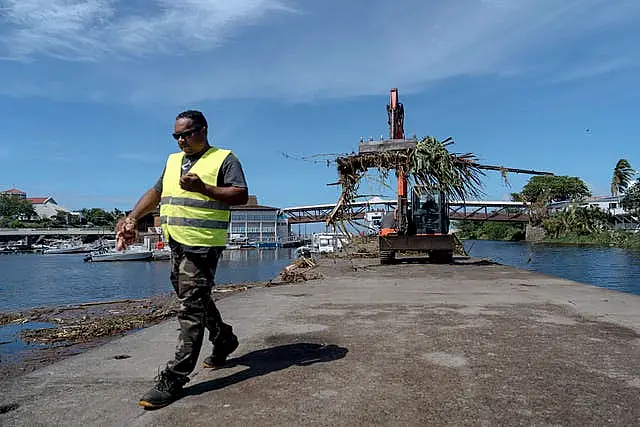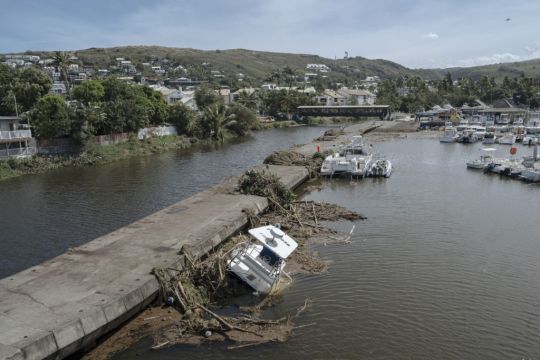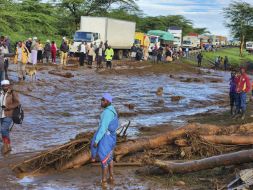Mauritius has lifted its highest weather alert and eased a nationwide curfew after a cyclone battered the Indian Ocean island, causing heavy flooding and extensive damage in the capital city and other parts of the country.
The nearby French island of Reunion is also assessing the aftermath of Tropical Cyclone Belal.
Belal ripped through the region off the east coast of Africa on Monday and early on Tuesday but has now passed both islands and is heading out to the Indian Ocean, the Mauritius Meteorological Services said.
The Mauritius government said the head of the meteorological services has stepped down after his institution was criticised for not giving adequate warning about how severe the impact of Belal would be.
Roads in the Mauritius capital, Port Louis, and elsewhere turned into raging rivers on Monday as Belal brought torrential rains and high winds.

Some people climbed on to the roof of their cars and clung on, according to videos published by Mauritius’s L’Express newspaper.
Motorists who had escaped from cars were seen being pulled to safety by others.
Buildings also came under threat from the flooding and some residents were evacuated.
One person was killed in Mauritius, a motorcyclist who died in an accident caused by the flooding, authorities said.
Authorities in Reunion also reported one death, although they said the circumstances of that fatality were unclear.
Mauritius Prime Minister Pravind Jugnauth and other members of his Cabinet visited areas hardest hit by the storm, especially in the south of the island.
The government said Belal has left “a trail of damage over the country”.

Mauritius has a population of about 1.2 million people and is a highly popular tourist destination.
Police are still mobilised across Mauritius, the government’s National Emergency Operations Command said, but people can leave their homes.
Schools and many businesses will remain closed until at least Wednesday.
Mauritius had enforced a curfew from Monday night until noon on Tuesday, with everyone ordered to remain at home except emergency workers, some hospital workers and security forces.
On Reunion, residents emerged from their homes on Tuesday to clean up.
Men in shorts trudged through ankle-high waters down a residential street in the town of Saint-Paul as winds buffeted the palm trees above.
Emergency workers were also scooping up branches and other debris blocking roads.
In the nearby town of Saint-Gilles-les-Bains, trees had crashed on to quays and into the picturesque marina and several boats were damaged.
The cyclonic winds hit hardest on the higher, inland points of the island, but roads to reach them remained impassable.
Some 40% of Reunion’s 860,000 people had no electricity and nearly half the island were without internet or mobile phone service, the head of the local administration, Jerome Filippini, told a press conference. Schools will be shut all week.
The French government sent some 150 rescuers and electrical workers from the mainland and the nearby French island of Mayotte to help, and interior minister Gerald Darmanin is expected on Reunion on Wednesday.
Cyclones are common between January and March in the Indian Ocean near southern Africa as seas in the southern hemisphere reach their warmest temperatures. The hotter water is fuel for cyclones.
Scientists say human-caused climate change has intensified extreme weather, making cyclones more frequent and rainier when they hit.
In 2019, Cyclone Idai ripped into Africa from the Indian Ocean, leaving more than 1,000 people dead in Mozambique, Malawi and Zimbabwe and causing a humanitarian crisis.
The United Nations said it was one of the deadliest storms on record in the southern hemisphere.







